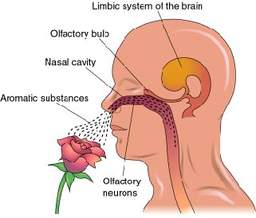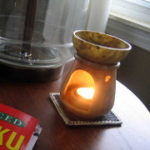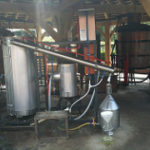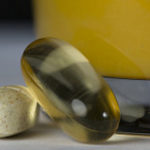Beginning aromatherapy can be a little discouraging. There’s SO many oils to choose from, with an incredible array of effects, and an equally incredible array of safety warnings. Where is one to start? Well, like learning anything new, the important thing is to actually get started – buy a few bottles of inexpensive, yet broadly appealing and effective oils and give them a try. It’s really more simple than you might think to use essential oils for things like stress reduction and minor wound healing. At the same time, you’ll be venturing into an entire branch of natural medicine, one in which European doctors even specialize in for addressing a wide variety of ailments. There are many, many excellent books available to advance your knowledge; just remember that essential oils are potent medicines: start slowly, use essential oils that are considered safe in all applications, and keep learning to expand your area of expertise.
The term Aromatherapy is a bit misleading, as the aroma of an essential oil is only one facet of the oil’s interaction with the human body. Aromatherapy is really the entire branch of botanical medicine using volatile aromatic plant compounds for treatment of various conditions. Many actions of essential oils don’t even have to do with one’s sense of smell. Beyond acting through the limbic system (the brain region immediately affected by the smell sense), many essential oils have proven antibiotic, antiviral, antispasmodic, antifungal and wound healing actions. Essential oils are used therapeutically when topically applied, sometimes ingested in small amounts (do this ONLY under the supervision of a qualified natural health professional!), but most often they are inhaled – which may be the most simple self-administering techniques of all.
When inhaled, essential oils effect our limbic system, the seat of the brain’s emotional centers. Many oils have been found to sharpen concentration, reduce tension and anxiety, and even reduce depression. Blends can be made for very specific psychological and emotional needs. How can we reap these magnificent benefits? There are a few simple, cost-effective ways to prepare essential oils for inhalation and experience these wonderful effects: the ‘handkerchief method’, making your own ‘smelling salts’, and making your own aromatherapy ‘mister’. More advanced users will want to use a cold-air nebulizing diffuser that disperses a fine mist of essential oil throughout your environment. With a little research, you’ll be able to find the right oil or oil combination to suit your needs.
The handkerchief method is pretty straightforward – put a drop or two of an oil or blend on a tissue and inhale (careful with some oils though – peppermint, for example, can burn the sensitive skin around your nostrils if put in direct contact). You can even leave the tissue, handkerchief, or piece of cloth in a room or your workspace and the oil will continue to evaporate and have its effects. Making your own smelling salts is similar, and your preparation will last a while longer. To make the salts, fill a small vial with natural sea salt and drip essential oils into the salt. The amount of oil needn’t be precise – enough that there is detectable aroma, and not so much that the salt gets completely wet. Just unscrew the cap and inhale from the bottle whenever you need a lift, or, like the handkerchief, leave the vial open in your space, letting the aroma slowly fill the area. A mister can be used infuse a room with aroma – just add essential oils to water in a small spray bottle (10 drops per cup of water is a good starting point), shake before each use and spray! When you’re ready for a greater impact from the aromatic use of oils, find a quality cold-air nebulizing diffuser. These units make fine mist of oil, creating a significant concentration in your environment, and can have valuable health benefits beyond stimulating the smell sense – they can purify the air in your home or office, and can help with many infectious illnesses when used as directed by a health practitioner.
Here are a few easy recipes for the inhalation method (Note: in all recipes, the number of drops of oil can be used as a ratio, which you can increase or decrease as you need): For uplifting the mood and brightening the mind – 4 drops of Rosemary Cineol, 3 drops of Lavender, 2 drops of Lemon and 1 drop of Peppermint, OR 3 drops Clary Sage, 2 drops Bergamot and 1 drop Sweet Orange. For calming anxiety – equal parts of Roman Chamomile, Bergamot and Orange, OR 3 drops Lavender, 2 drops Neroli and 1 drop Bergamot. For creating a harmonious atmosphere – 3 drops Jasmine, 1 drop Ylang Ylang and 1 drop Sandalwood, OR equal parts Geranium, Patchouli and Bergamot. For simply bringing calm or inducing sound sleep, pure French Lavender oil by itself may be perfect. These and other blends can make wonderful natural perfumes when diluted to 1-5 in Jojoba oil; Rose and Jasmine oils can be used this way by themselves. Other single oils to consider for your environment are Balsam Fir, which has a lovely ‘deep forest’ scent; Juniper Berry brings a brighter evergreen aroma; and Lemon Tea Tree is a powerful oil where offensive odors may be a problem.
Aromatherapy massage and topical application: Ideally, this is done with a partner, but self-massage will work as well. Creating your own massage oil is a straightforward process; just dilute 10 – 20 parts of essential oil (single or blended) per ounce of carrier oil. There are a variety of carrier oils available; Sweet Almond is a great all-around oil and is recommended for general aromatherapy massage. As for the massage, itself, any technique will do – let your intuition be your guide. The blends listed above will work effectively as massage oils as well, when diluted in a carrier, though here are a few more fun recipes: For a sensual massage, per ounce of carrier oil, add – 8 parts Sandalwood, 6 parts Rose, 4 parts Lavender and 2 parts Ylang Ylang. For opening the heart, try 4 parts Spikenard, 4 parts Lavender and 2 parts of Rose. Finally, for sheer relaxation, use 6 parts Lavender, 4 parts Neroli and 2 parts Bergamot. Note that topical application of citrus oils (Orange, Bergamot, Tangerine, Lemon, Lime, etc.) should be avoided on skin that will be exposed to direct sunlight in the following few days – these oils are known to be photo-sensitizing, and can make the skin more susceptible to burning by UV rays. The feet are excellent receivers of essential oil energy; this is the basis of reflexology. Many oils that can irritate sensitive skin elsewhere can be applied ‘neat’ (undiluted) to the bottoms of the feet; the tops of the feet are more sensitive, though this area will also have significant energetic results.
Don’t be afraid to create your own blends! You will certainly find particular oils that you enjoy – and aromatherapy is like that. It is the oils you find most enjoyable that are likely those that are most effective for you. An important starting note is to change the ratios of oils you are blending very slowly. Start with one part of each oil in a small vial, mixing them and allowing a few minutes for them to blend before adding more oil 1 part at a time. In general, citrus oils (Orange, Bergamot, Tangerine, Lemon, Lime) tend to bring alertness while calming at the same time. Herb oils (Peppermint, Rosemary and Basil) tend to be invigorating, while floral oils tend to be relaxing (Lavender, Chamomile, Jasmine, Neroli). This is only a guideline – many oils have complex properties and will affect individuals differently – use your nose as a guide.
Medical aromatherapy, the use of essential oils to treat specific medical conditions, requires a bit more knowledge in many cases. There are a few excellent examples of employing oils for common needs: Lavender works very well for minor burns; it is anti-inflammatory and helps the skin regenerate. Blended half and half with Tea Tree, it can be used in place of other antibacterial agents on small cuts and scrapes. Helichrysum italicum oil is a remarkable healer of bruises and sports injuries; it can be used undiluted or at a 5-10 dilution in Hazelnut oil. Melissa oil is documented as an excellent treatment for the herpes virus. For support for common colds, inhale equal parts Lavender, Rosemary and Eucalyptus. For support in clearing chest and sinus conditions, use Lavender, Tea Tree and Eucalyptus. These blends can be added to a carrier oil and rubbed into the chest, inhaled from a steaming bowl of water (with the eyes closed!) or used in a diffuser. The greatest promise for medical essential oil use lies in their profound ability to eradicate bacteria and viruses – this is where the need of an experienced professional arises, however. As with any medication, matching the correct oil and it’s application with the illness is critical, otherwise the oil may have no effect, and the patient may not heal. When done properly, however, remarkable results have been achieved.










Leave a reply